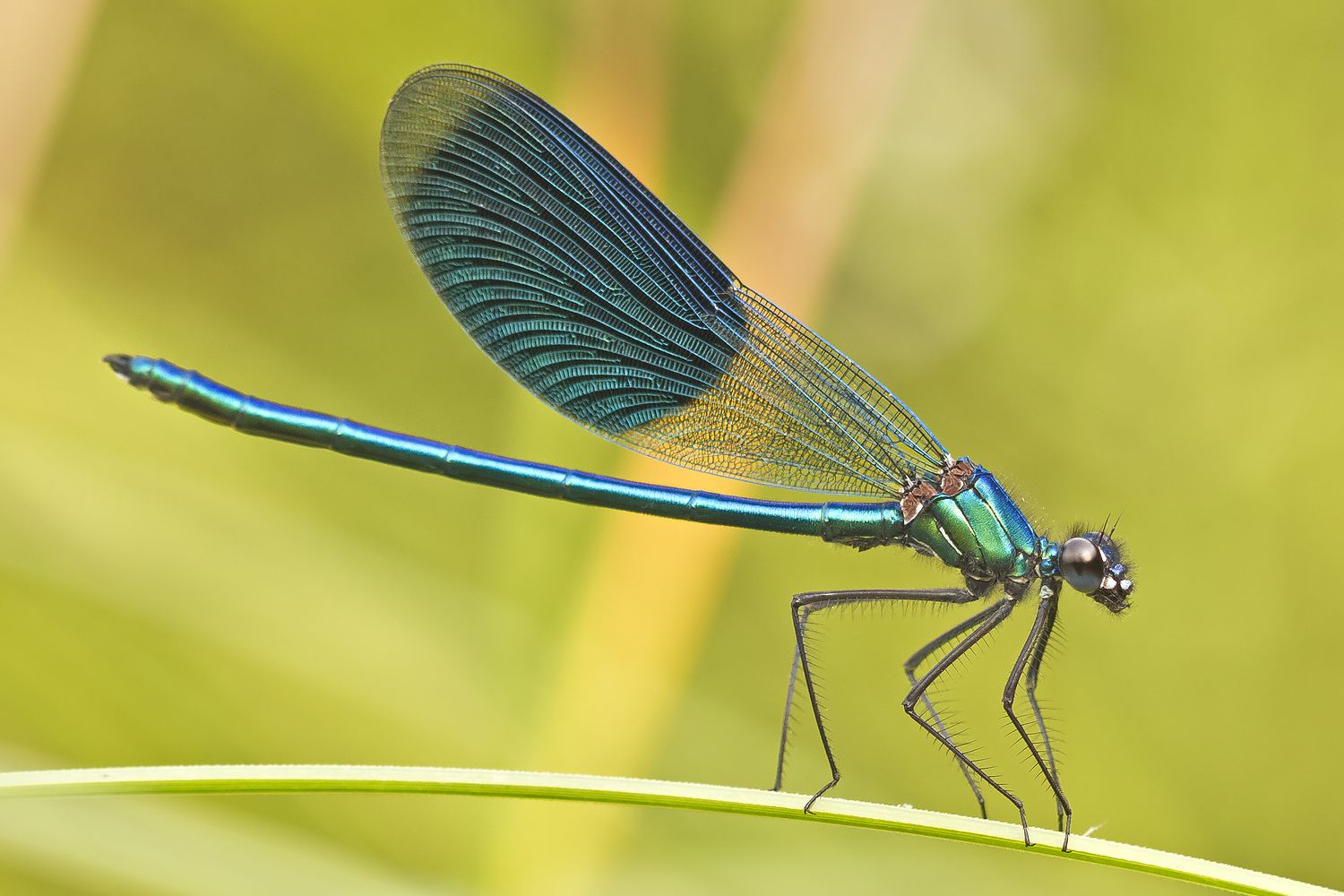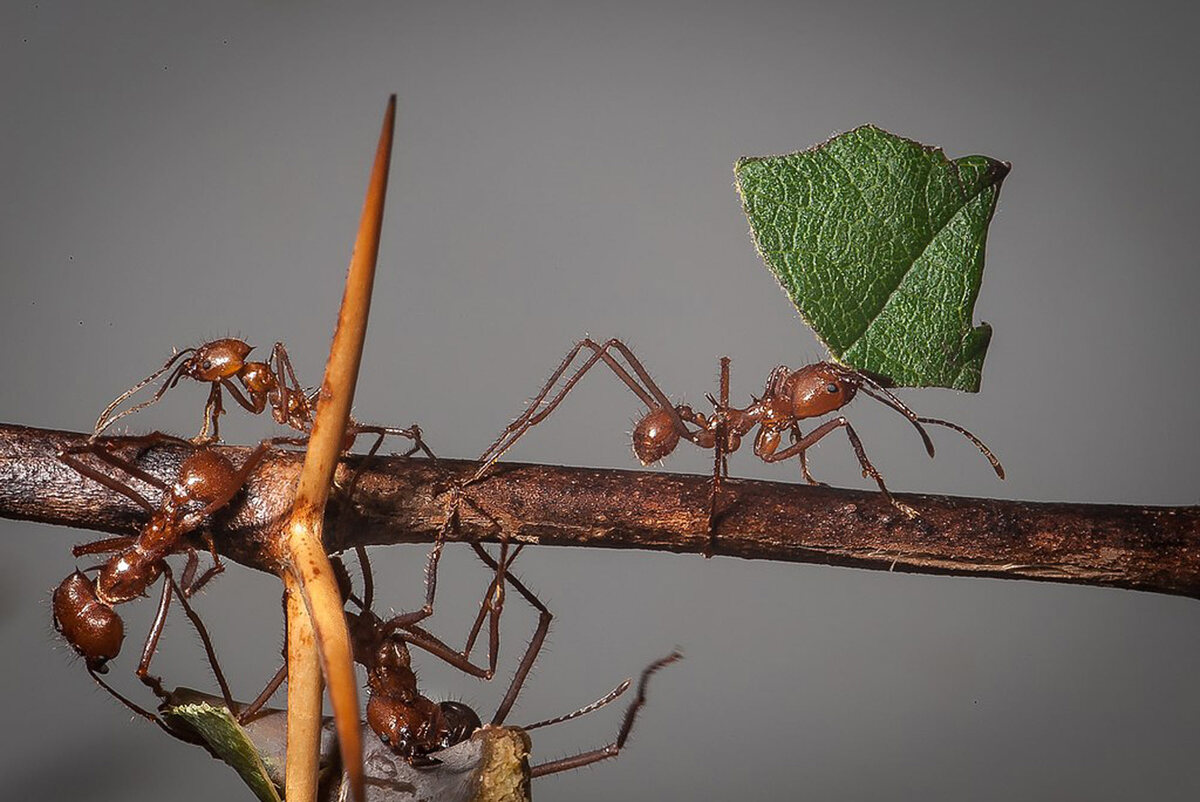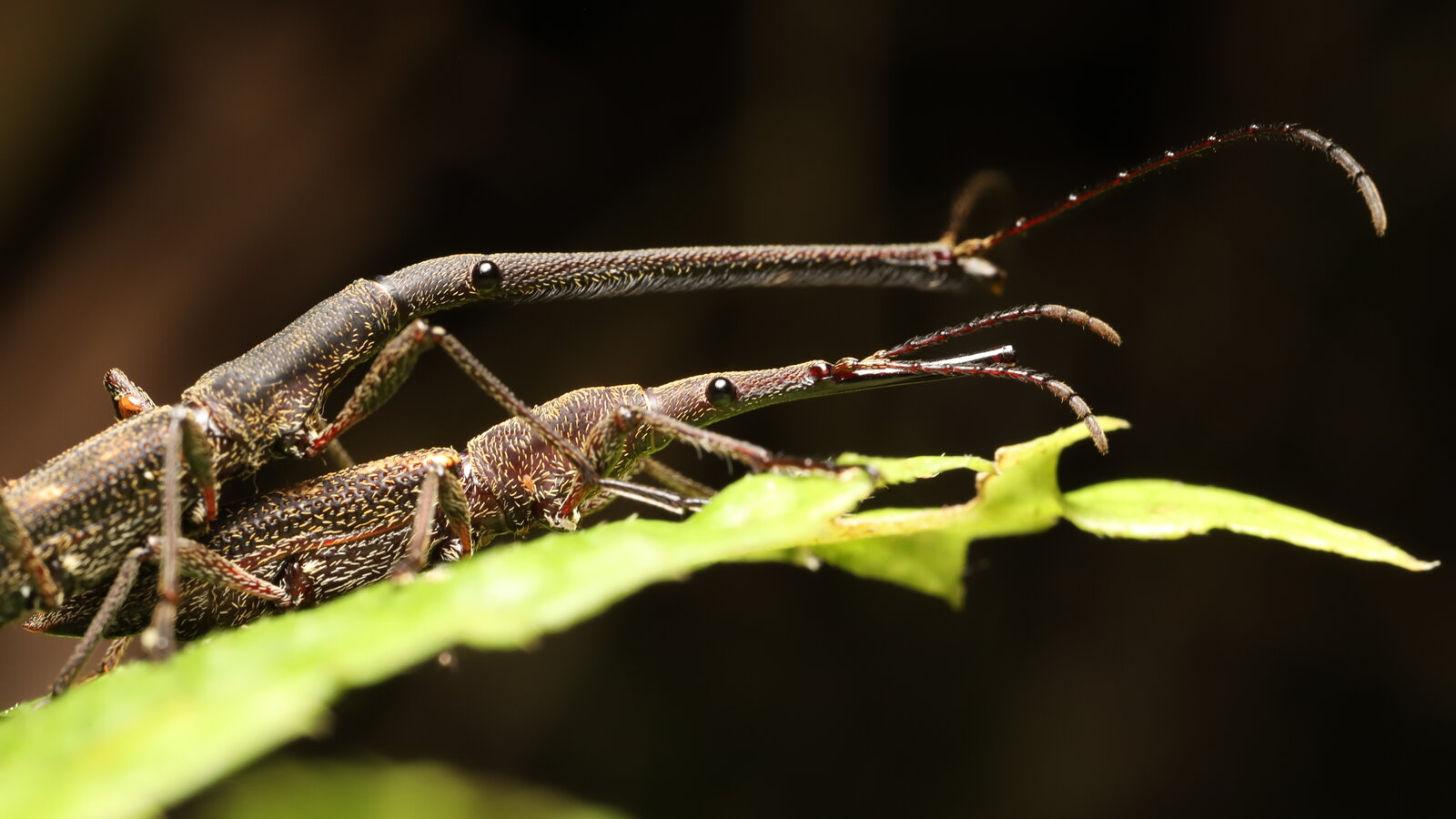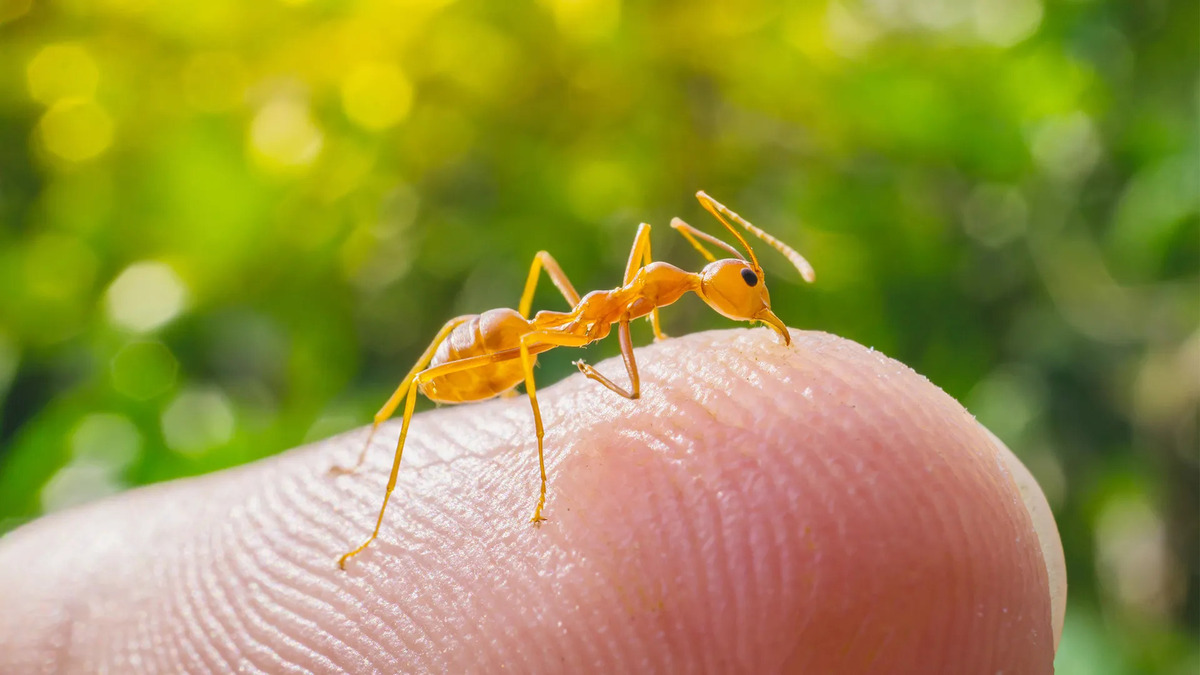Home>Gardening News and Trends>Latest News>Humans Breathe Through Bronchi. Which Structure Do Insects Have For Breathing?


Latest News
Humans Breathe Through Bronchi. Which Structure Do Insects Have For Breathing?
Published: November 28, 2023
Discover the fascinating world of insect respiration. Learn about the unique structures they use to breathe in the latest news on insect biology.
(Many of the links in this article redirect to a specific reviewed product. Your purchase of these products through affiliate links helps to generate commission for Chicagolandgardening.com, at no extra cost. Learn more)
Table of Contents
- Introduction
- Overview of Human Respiratory System
- Bronchi: Structures for Breathing in Humans
- Respiratory System of Insects
- Insect Breathing Structures: An Overview
- Tracheal System: Main Breathing Structure in Insects
- Spiracles: External Openings for Air Entry in Insects
- Respiration in Insects: How Oxygen is Distributed
- Comparison of Human and Insect Respiratory Systems
- Conclusion
Introduction
Welcome to the fascinating world of respiratory systems! Breathing is a fundamental process for all living organisms, as it ensures the exchange of oxygen and carbon dioxide, necessary for the survival of cells. While humans rely on complex airways known as bronchi for breathing, have you ever wondered how insects, with their small and seemingly simple bodies, accomplish this essential task?
In this article, we will explore the respiratory systems of both humans and insects, focusing on the structures through which they breathe. We will delve into the intricacies of the bronchi in humans, as well as the unique adaptations that insects have developed to facilitate respiration. By comparing and contrasting these two systems, we can gain a deeper understanding of the diversity and ingenuity of nature.
The human respiratory system is a marvel of evolutionary engineering, comprising a highly specialized network of organs that work together to ensure the intake of oxygen and the elimination of carbon dioxide. On the other hand, insects, with their tiny bodies, need to rely on different mechanisms to meet their respiratory needs.
Join us on this journey as we delve into the world of bronchi and insect breathing structures. By the end of this article, you will have a newfound appreciation for the complexity and elegance of these two respiratory systems, and a deeper understanding of how different organisms have adapted to breathe and thrive in their respective environments.
Overview of Human Respiratory System
The human respiratory system is a complex and highly efficient system responsible for the intake of oxygen and the expulsion of carbon dioxide. It consists of several key organs and structures that work together to facilitate the process of respiration.
At the core of the respiratory system are the lungs, two large and spongy organs situated within the chest cavity. The lungs are protected by the ribcage and lined with a thin layer of tissue known as the pleura. When we inhale, the diaphragm contracts and the ribcage expands, creating a vacuum that draws air into the lungs.
As the inhaled air enters the respiratory system, it passes through the trachea, commonly known as the windpipe. The trachea is a tube composed of cartilaginous rings that keep it open and prevent collapse. It branches into two smaller tubes called bronchi, which lead to the left and right lungs.
Within the lungs, the bronchi continue to divide into smaller and narrower passageways known as bronchioles. The bronchioles eventually terminate in tiny air sacs called alveoli, which are the sites of gas exchange between the respiratory system and the blood vessels.
During respiration, oxygen from the inhaled air enters the bloodstream through the walls of the alveoli, while carbon dioxide, a waste product of metabolism, diffuses out of the capillaries and into the alveoli to be expelled during exhalation.
The human respiratory system also includes several accessory structures that aid in the process of breathing. The nose and mouth act as entry points for air, where it is filtered, warmed, and moistened before entering the lungs. The larynx, or voice box, houses the vocal cords and plays a crucial role in speech production.
In addition, the respiratory system is responsible for controlling the pH levels of the body through the regulation of carbon dioxide levels. When we exhale, carbon dioxide is eliminated from the body, helping to maintain a healthy acid-base balance.
Overall, the human respiratory system is a remarkable example of intricate design and coordination. The lungs, trachea, bronchi, and alveoli work together seamlessly to ensure the exchange of gases, enabling the oxygenation of the body’s tissues and the removal of waste products.
Now that we have gained an overview of the human respiratory system, let’s dive deeper into the structure that plays a crucial role in breathing – the bronchi.
Bronchi: Structures for Breathing in Humans
The bronchi are integral structures within the human respiratory system that play a crucial role in the intake and distribution of air. As part of the branching network that originates from the trachea, these airways ensure that oxygen reaches the lungs while also removing the waste product, carbon dioxide.
When the inhaled air enters the trachea, it passes through the larynx and into the bronchi, which serve as the main conduits for air distribution. The trachea bifurcates into two primary bronchi, with each bronchus leading to one lung. These primary bronchi further divide into smaller secondary bronchi, which then branch into even smaller tertiary bronchi, forming an intricate network within the lungs.
The bronchi are composed of cartilaginous rings that provide structural support and prevent collapse. The walls of the bronchi contain smooth muscle fibers that enable the contraction and relaxation necessary for the regulation of airflow. This allows for the adjustment of airway diameter, ensuring efficient distribution of air throughout the lungs.
As the bronchi divide into narrower branches, they eventually give rise to bronchioles, which are tiny air passages that further facilitate the diffusion of gases. Unlike the bronchi, the bronchioles lack cartilage and primarily consist of smooth muscle tissue. This lack of cartilage allows for greater flexibility and allows the bronchioles to constrict or dilate in response to various stimuli, such as the presence of irritants or the need for increased airflow during exercise.
The walls of the bronchi and bronchioles are lined with specialized cells that produce mucus. This mucus acts as a protective layer, trapping dust, pollutants, and other foreign particles that have been inhaled. The cilia, hair-like structures on the surface of the bronchial cells, then work together in coordinated movements to move the mucus and any trapped particles upwards toward the throat. From there, it is either coughed up or swallowed, preventing potential damage or irritation to the lungs.
The bronchi, along with the rest of the respiratory system, are essential for maintaining a constant supply of oxygen to the body’s tissues and ensuring the efficient removal of carbon dioxide. A healthy and well-functioning bronchial system is crucial for optimal respiratory function and overall well-being.
In the following sections, we will shift our focus to the fascinating world of insect respiratory systems, exploring the unique structures and adaptations they possess for breathing.
Respiratory System of Insects
The respiratory system of insects is remarkably different from that of humans. Insects have evolved specialized structures that allow them to obtain oxygen and release carbon dioxide efficiently, despite their small size and the absence of lungs.
Unlike humans, insects do not have a centralized respiratory organ. Instead, they rely on a combination of external and internal structures to facilitate respiration.
The main respiratory structure in insects is the tracheal system, which consists of a network of tubes called tracheae. These tracheae branch out from openings called spiracles, which are tiny punctures located on the surface of an insect’s exoskeleton. Spiracles act as the external entry points for air into the insect’s respiratory system.
The tracheae extend throughout the insect’s body, delivering oxygen directly to individual cells. These small, thin-walled tubes reach even the most remote parts of the insect’s internal organs, ensuring efficient gas exchange with every cell. The tracheae are reinforced with rings of chitin, a tough and flexible material that helps maintain their shape and prevents collapse.
In addition to the tracheal system, some insects also have air sacs, which are internal structures that store and distribute air within the body. Air sacs help regulate gas flow and provide a reservoir of oxygen for increased metabolic demands, such as during flight.
The movement of air in and out of the spiracles is regulated by valves that can open and close to control the airflow. These valves prevent the entry of unwanted particles and help conserve water, as insects can lose water through the spiracles during respiration.
Interestingly, the respiratory system of insects also plays a role in other physiological processes. For example, the spiracles can be used for releasing pheromones, chemical substances used for communication or attracting mates.
Overall, the respiratory system of insects is ingenious in its simplicity and efficiency. Through the tracheal system and the use of spiracles, insects have developed a highly effective means of obtaining oxygen and removing carbon dioxide, allowing them to thrive in diverse environments.
In the next section, we will explore the tracheal system and spiracles in more detail, shedding light on how insects accomplish respiration through these specialized structures.
Insect Breathing Structures: An Overview
When it comes to breathing, insects have developed unique and efficient structures that enable them to respire without the need for complex organs like lungs. The primary respiratory structures in insects are the tracheal system and spiracles, which work together to facilitate gas exchange.
The tracheal system is a network of tubes called tracheae that deliver oxygen directly to the insect’s cells. These tubes branch out from the spiracles, which are small openings located along the sides of an insect’s body. The number and placement of spiracles vary depending on the insect species, with some having spiracles on every body segment, while others have them in limited areas.
The tracheae, made up of a single layer of epithelial cells, are supported by chitin rings to prevent collapse. They extend throughout an insect’s body, reaching even the most remote tissues and organs. The tracheae divide into smaller tubes called tracheoles, which form an intricate network within the cells themselves. Tracheoles are extremely thin and surrounded by fluid, allowing for efficient gas exchange with nearby cells.
The spiracles, located on the insect’s exoskeleton, serve as the entry points for air into the tracheal system. These openings can be opened or closed by valves, which regulate the flow of gases. By selectively opening and closing the spiracles, insects can control the exchange of gases and minimize water loss. This is especially important for insects living in arid environments, where water conservation is crucial.
In some insects, specialized structures called air sacs can be found within the tracheal system. These air sacs act as reservoirs of air and can help regulate gas flow, particularly during periods of increased metabolic activity, such as flight. Air sacs play a crucial role in maintaining a sufficient oxygen supply and supporting the insect’s high energy demands.
The efficient design of the tracheal system and spiracles allows insects to respire effectively despite their small size. It enables rapid gas exchange, allowing oxygen to reach every cell in the insect’s body. Insects have evolved this unique breathing mechanism to adapt to diverse environments and thrive in a wide range of ecological niches.
Now that we have explored the overview of insect breathing structures, we will delve deeper into the tracheal system and spiracles, shedding light on the intricacies of insect respiration.
Tracheal System: Main Breathing Structure in Insects
The tracheal system is a vital respiratory structure in insects, responsible for delivering oxygen directly to their cells. This intricate network of tubes, known as tracheae, allows for efficient gas exchange, enabling insects to thrive in a wide variety of environments.
The tracheae form the main component of the tracheal system and are composed of a single layer of epithelial cells. They extend throughout the insect’s body, branching into smaller tubes called tracheoles. The tracheae are reinforced by chitin rings, providing structural support and preventing collapse.
The tracheoles, which are responsible for the exchange of gases with individual cells, form a highly intricate and extensive network within the insect’s tissues. These thin tubes are in close proximity to the cells and are immersed in fluid, enabling effective diffusion of oxygen and carbon dioxide.
The movement of gases within the tracheal system occurs passively through a process known as diffusion. Oxygen from the atmosphere enters the spiracles, travels through the tracheae, and diffuses into the tracheoles near the cells that require oxygen. Simultaneously, carbon dioxide, a waste product of metabolism, diffuses out of the cells and into the tracheoles, where it returns to the atmosphere through the spiracles.
The tracheal system provides several advantages for insect respiration. Firstly, it eliminates the need for a centralized respiratory organ, allowing for greater flexibility in body size and shape. Insects with a tracheal system can maintain a high surface-to-volume ratio, enabling efficient gas exchange even in tiny and compact bodies.
Moreover, the tracheal system allows for rapid and direct oxygen delivery to tissues, ensuring an adequate oxygen supply for the insect’s high metabolic demands. This efficiency is particularly crucial for highly active insects or those engaged in energetic activities such as flight.
The tracheal system also aids in thermoregulation. Insects can control the flow of air through their spiracles, adjusting the rate of gas exchange and influencing their body temperature. By regulating the amount of oxygen available, insects can modify their metabolic rate and regulate their body heat.
Overall, the tracheal system is a remarkable adaptation, enabling insects to respire efficiently and thrive in diverse environments. This incredibly specialized network of tubes provides a direct and effective means for oxygen delivery and carbon dioxide removal, allowing insects to sustain their numerous physiological activities.
In the next section, we will explore the external openings through which air enters the tracheal system – the spiracles.
Spiracles: External Openings for Air Entry in Insects
Spiracles are the external openings through which air enters the tracheal system of insects. These small, strategically placed openings play a crucial role in facilitating gas exchange and maintaining the efficient respiration of these remarkable creatures.
Located on the surface of an insect’s exoskeleton, the number and placement of spiracles vary depending on the species. Insects have different arrangements of spiracles, with some having them on every body segment, while others have them located on specific body parts.
Each spiracle is surrounded by a ring of cuticular cells that form a valve-like structure. This valve can be opened and closed, allowing the insect to regulate the flow of air into and out of the tracheal system. By selectively opening and closing the spiracles, insects are able to control the exchange of gases and minimize water loss.
The primary function of spiracles is to serve as the entry points for air into the tracheal system. When an insect requires oxygen, the spiracles open, allowing atmospheric air to enter the tracheae. Similarly, when carbon dioxide needs to be expelled, the spiracles open, enabling the release of the waste gas from the tracheal system.
The opening and closing of the spiracles is controlled by specialized cells, which respond to various stimuli including oxygen levels, carbon dioxide levels, and humidity. This regulation helps maintain optimal oxygen and carbon dioxide concentrations while conserving water, especially in arid environments where water loss can be significant.
Interestingly, not all spiracles are active at all times. Insects have the ability to selectively open or close specific spiracles, allowing for compartmentalized gas exchange. This selective opening also helps them regulate airflow to specific regions of their bodies, such as during flight or while submerged in water.
In addition to their role in respiration, spiracles have other functions depending on the insect species. Some spiracles also release pheromones, chemical substances used for communication or attracting mates. These specialized openings serve a dual purpose by facilitating both gas exchange and chemical signaling.
The structure and function of spiracles highlight the adaptability and efficiency of insect respiratory systems. Through these external openings, insects can regulate their respiration, maintain homeostasis, and thrive in diverse ecological niches.
Now that we have explored the significance of spiracles as entry points for air into the tracheal system, we will dive deeper into the process of respiration in insects and how oxygen is distributed throughout their bodies.
Respiration in Insects: How Oxygen is Distributed
Respiration in insects involves the efficient distribution of oxygen throughout their bodies to meet the metabolic demands of their cells. Through their specialized tracheal systems, insects have evolved mechanisms to ensure that every cell receives an adequate supply of oxygen.
As air enters the spiracles, it travels through the tracheae and reaches the tracheoles, which are the finest branches of the tracheal system. The tracheoles come into close proximity to individual cells, allowing for direct gas exchange between the tracheal system and the cells themselves.
Diffusion is the primary mechanism through which oxygen is transferred from the tracheoles to the cells. Oxygen molecules move from areas of higher concentration, such as the tracheoles, to areas of lower concentration, which are the cells where oxygen is consumed in cellular respiration. Likewise, carbon dioxide diffuses out of the cells and into the tracheoles, where it can be expelled through the spiracles.
The tracheal system in insects is highly efficient in delivering oxygen to every cell due to its extensive network of tubes. The tracheae and tracheoles ensure that no cell is too far from a source of oxygen, allowing for rapid diffusion and effective gas exchange. This direct pathway between the respiratory system and cells eliminates the need for specialized respiratory organs, such as lungs, which would be less efficient for smaller organisms.
Physical activity and increased metabolic demands require a higher oxygen supply. In response, insects have developed adaptations to enhance gas exchange and oxygen delivery. For example, some insects have enlargements called air sacs that store excess air, providing a reservoir of oxygen for greater metabolic demands, such as during flight or intense physical exertion.
Insects can also regulate the flow of air through the spiracles and adjust the rate of gas exchange. By opening and closing the spiracles and modifying the diameter of the tracheae, insects can control the amount of oxygen entering their bodies. This ability to regulate oxygen intake helps them adapt to varying environmental conditions and conserve energy.
Additionally, temperature can influence insect respiration. In colder temperatures, insects may reduce gas exchange to limit heat loss, while in warmer temperatures, they may increase gas exchange to release excess heat. This thermoregulation mechanism ensures optimal reactions within their cells and helps maintain an optimal body temperature.
The efficient distribution of oxygen in insects is a testament to the remarkable adaptability and evolutionary success of these organisms. Through their specialized tracheal systems and the use of diffusion, insects can effectively meet their metabolic needs and thrive in diverse environments.
In the next section, we will compare and contrast the respiratory systems of humans and insects, highlighting the unique features and adaptations of each.
Comparison of Human and Insect Respiratory Systems
While humans and insects both require oxygen for respiration, their respiratory systems have distinct characteristics and adaptations to meet their respective needs. Let’s explore the key differences and similarities between these two fascinating respiratory systems.
One of the fundamental differences lies in the structures involved in respiration. Humans rely on a complex system of organs, including the lungs, bronchi, and alveoli, to facilitate the exchange of gases. In contrast, insects have a decentralized respiratory system, consisting of a network of tubes called tracheae and openings called spiracles. This difference in structure allows insects to maintain a high surface-to-volume ratio, enabling efficient gas exchange even in their tiny bodies.
Another major difference is the mechanism of gas exchange. In humans, oxygen is exchanged with carbon dioxide in the alveoli through a process called pulmonary respiration. Insects, on the other hand, have a system of tracheae and tracheoles that directly deliver oxygen to individual cells via diffusion. This direct pathway eliminates the need for a circulatory system to transport gases, making the insect’s respiratory system incredibly efficient for their small size.
The way oxygen enters the respiratory system also differs. In humans, air enters through the nasal passages or mouth and travels through the trachea, bronchi, and smaller airways to reach the alveoli. In contrast, insects have external openings called spiracles that allow air to enter the tracheal system directly.
Furthermore, the regulation of respiration varies between humans and insects. Humans have specialized structures, such as the diaphragm and intercostal muscles, that enable the control of breathing rate and depth. Insects, however, control respiration by opening and closing their spiracles, which determine the flow of air into and out of their tracheal system. This allows insects to regulate gas exchange in response to varying environmental conditions and metabolic demands.
Despite these differences, there are also shared features between human and insect respiratory systems. For instance, both systems have adaptations to conserve water loss during the process of respiration. In humans, the respiratory system is lined with mucus-producing cells that help humidify the air we breathe, reducing water loss. Insects, with their spiracles and tracheal system, can minimize water loss by selectively opening and closing their spiracles to control gas exchange and reduce evaporation.
In summary, the respiratory systems of humans and insects have evolved to suit their unique physiological and environmental demands. While humans rely on complex organs and systematic gas exchange, insects have developed a decentralized tracheal system for efficient direct oxygen delivery to cells. Understanding these differences and similarities between human and insect respiratory systems allows us to appreciate the incredible adaptability and diversity of life on Earth.
In the final section, we will conclude our exploration of respiratory systems, highlighting the importance of these structures in sustaining life.
Conclusion
Exploring the respiratory systems of humans and insects has revealed the remarkable adaptations and diversity found in nature. While humans employ a sophisticated network of organs, including the lungs and bronchi, insects have developed intricate tracheal systems and spiracles to meet their respiratory needs.
The human respiratory system, with its bronchi and alveoli, ensures efficient gas exchange and oxygenation of tissues. In contrast, the respiratory system of insects, consisting of the tracheal system and spiracles, allows for direct oxygen delivery to cells, eliminating the need for a centralized respiratory organ.
By comparing these two systems, we can appreciate the ingenuity of nature in designing respiration mechanisms that suit the specific requirements of each organism. Humans have evolved a system that allows for precise control of airflow and gas exchange, enabling adaptation to a wide range of environments. Insects, on the other hand, have developed a decentralized system that provides efficient oxygen delivery and supports their high metabolic demands.
Both human and insect respiratory systems share common principles of gas diffusion and adaptations to conserve water loss during respiration. These shared features highlight the universal importance of respiration in sustaining life.
By delving into the intricacies of respiratory structures and processes, we gain a deeper understanding of the remarkable diversity and adaptability of living organisms. The study of respiratory systems not only enhances our appreciation for the complexities of life but also provides valuable insights into the fascinating world of biological functioning.
So, the next time you take a breath or notice the delicate flight of an insect, remember the incredible respiratory systems at work, allowing these organisms to thrive and endure in their unique habitats.







